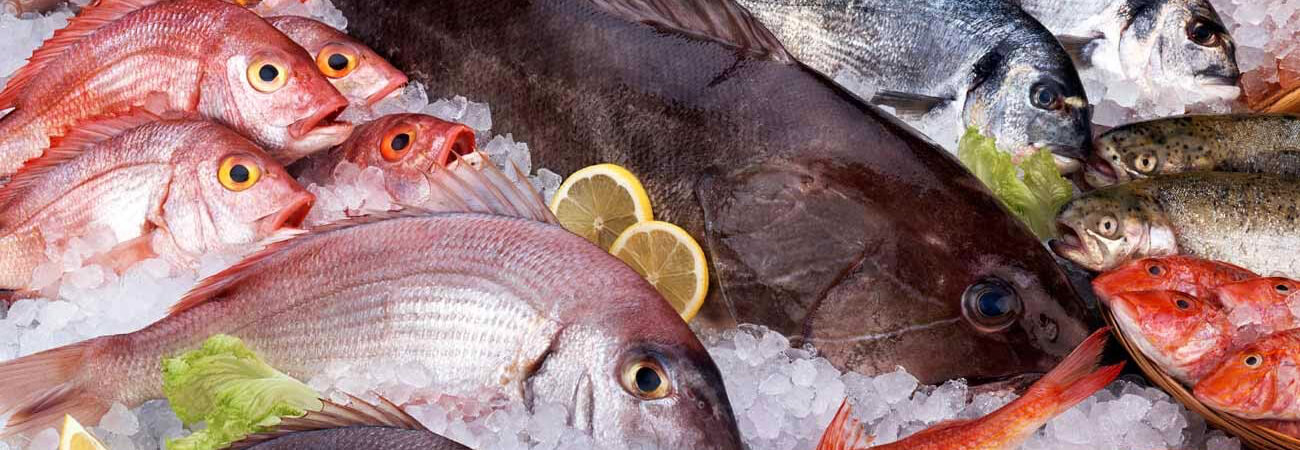
Frozen fish is divided into 1st and 2nd grades, except small-sized fish, which is not divided into grades.
- Fish of the 1st grade (grade A) and standard small-sized fish should have clean surface and natural colour and should not have any exterior defects. Gutting should be correct, whereas flesh texture and smell after thawing should be typical of a particular kind of fish and lack any signs of defects.
- Fish of the 2nd grade (grade B) may have tarnished surface and even superficial yellowing of integument, mechanical damages of skin, signs of initial stage of “nuptial dress”, deviations from correct gutting and weakened, but not flabby flesh consistency and slightly sour smell in gills after thawing.
There are several methods of freezing fish: by natural frost, in ice-and-salt mixtures or cooled salt solutions, in freezing chambers or apparatus using artificial cold. Fish is frozen in bulk, by the piece and in blocks.
 Natural freezing
Natural freezing
This is the most ancient method of freezing fish, but nowadays it does not have much practical significance. It is preserved only in certain regions with low temperatures in winter, where ice fishing is carried out. Good quality fish is obtained when it is frozen at an air temperature of not higher than -15°C. Such fish has an open mouth, lifted gill covers and spread fins.
 Freezing in ice-and-salt mixtures
Freezing in ice-and-salt mixtures
This method is based on self-cooling. Ice melting and salt dissolution requires heat, which is absorbed from outdoor environment. Obtaining an ice-and-salt mixture with a temperature of about -20ºC requires salt in the amount of not less than 25% of ice mass and ice in the amount of 100-125% of fish mass. Ice, salt and fish are put in layers. This freezing method is not widely used nowadays, because fish loses shape and gets impregnated with salt for a depth of 2-3 cm. Salty flavour appears and fish surface tarnishes.
 Freezing in cooled brine and ice-and-salt mixtures
Freezing in cooled brine and ice-and-salt mixtures
Freezing can be contact (when fish contacts cooling medium) and noncontact (in sealed metallic containers). In contact freezing fish contacts brine, as a result of which fish surface tarnishes and gets impregnated with salt. In noncontact freezing fish is placed in metallic containers impermeable for brine, thus obtaining a higher quality product
Freezing in freezing chambers is a widespread method, although it is almost impossible to achieve fast freezing of fish. Even if initial temperature in the chamber is -25ºC, it increases sharply when fish is loaded inside. For freezing, fish is laid on shelves and the largest fish is hanged on hooks. Duration of freezing is 4-5 days. Small-sized fish (ruff, perch, Baltic herring, smelt, etc.) is frozen in bulk or in layer of 10-15 cm in boxes or baskets.
 Freezing fish in fast frosters
Freezing fish in fast frosters
This is the most advanced method of freezing fish. In this case fish (fillet) is supplied on trays or in block molds of stainless steel. After leveling of fish, trays are squeezed between plates, inside which a refrigerant with a temperature of -30°С circulates. The temperature inside a fish block reaches -18°С during 3-4 hours. When block molds are opened, a force is created that tears off the fish block from the inner walls of the block mold.
Liquid nitrogen freezing is the most effective method of fish freezing. Nitrogen boiling temperature is -195.6°С. The process lasts for 10-15 minutes and, as a result, a high quality frozen product is obtained.
For slowing shrinkage and fat oxidation during storage, immediately after freezing fish is glazed, i.e. covered with thin (2-3 mm) layer of ice by repeated immersion in cold water, or vacuum packed in synthetic film bags.


